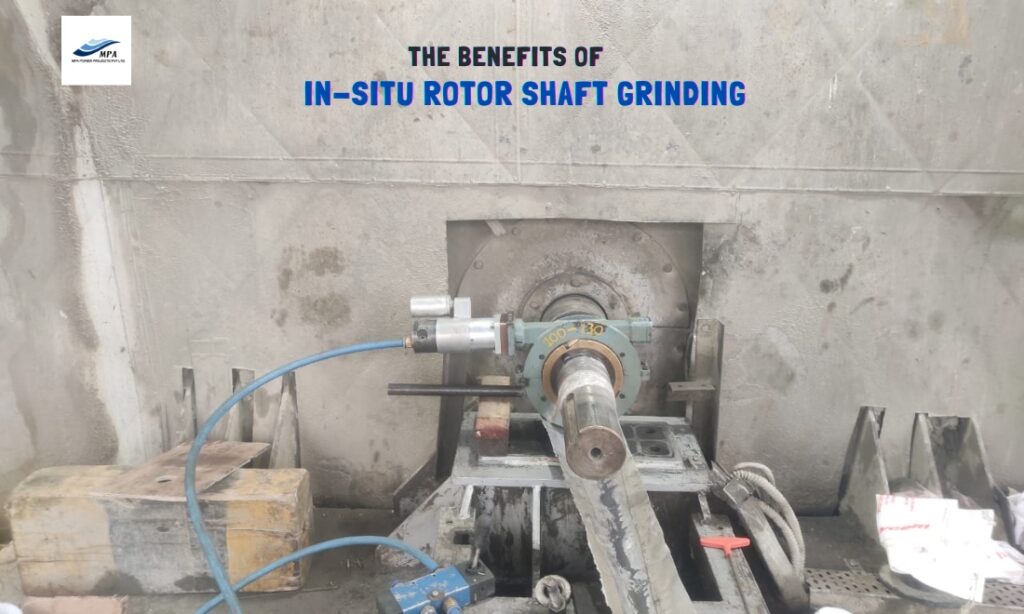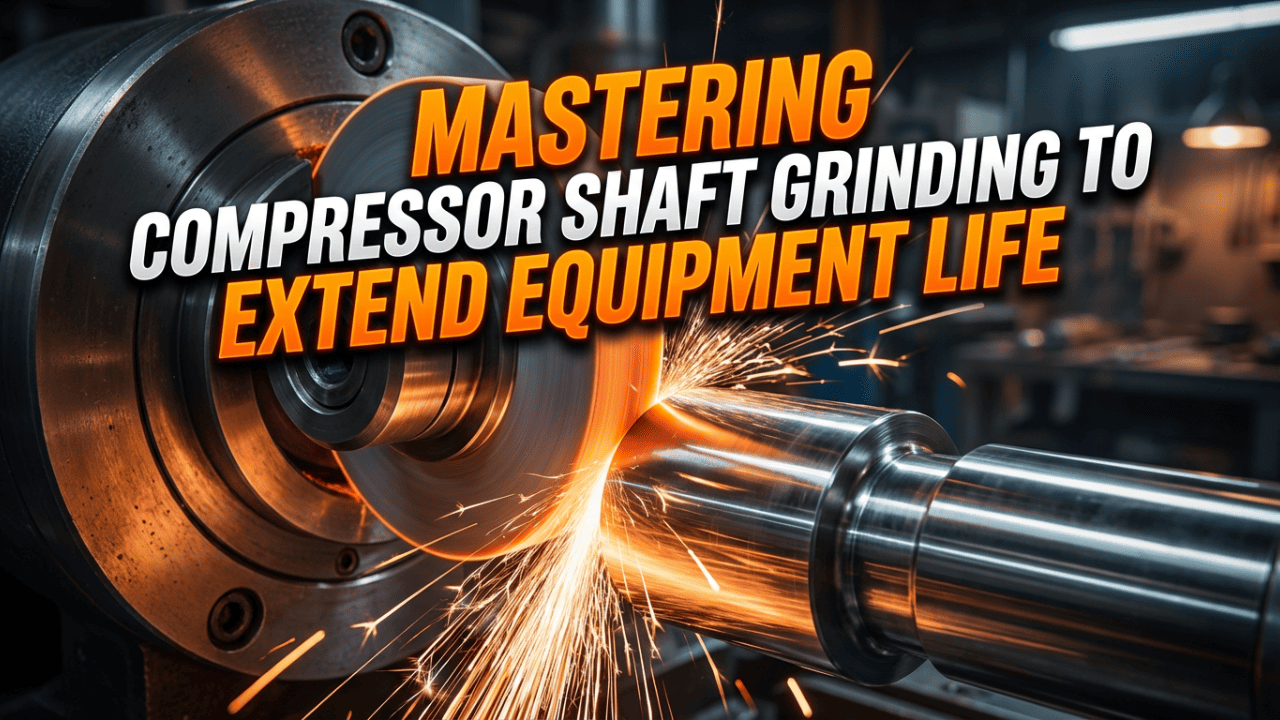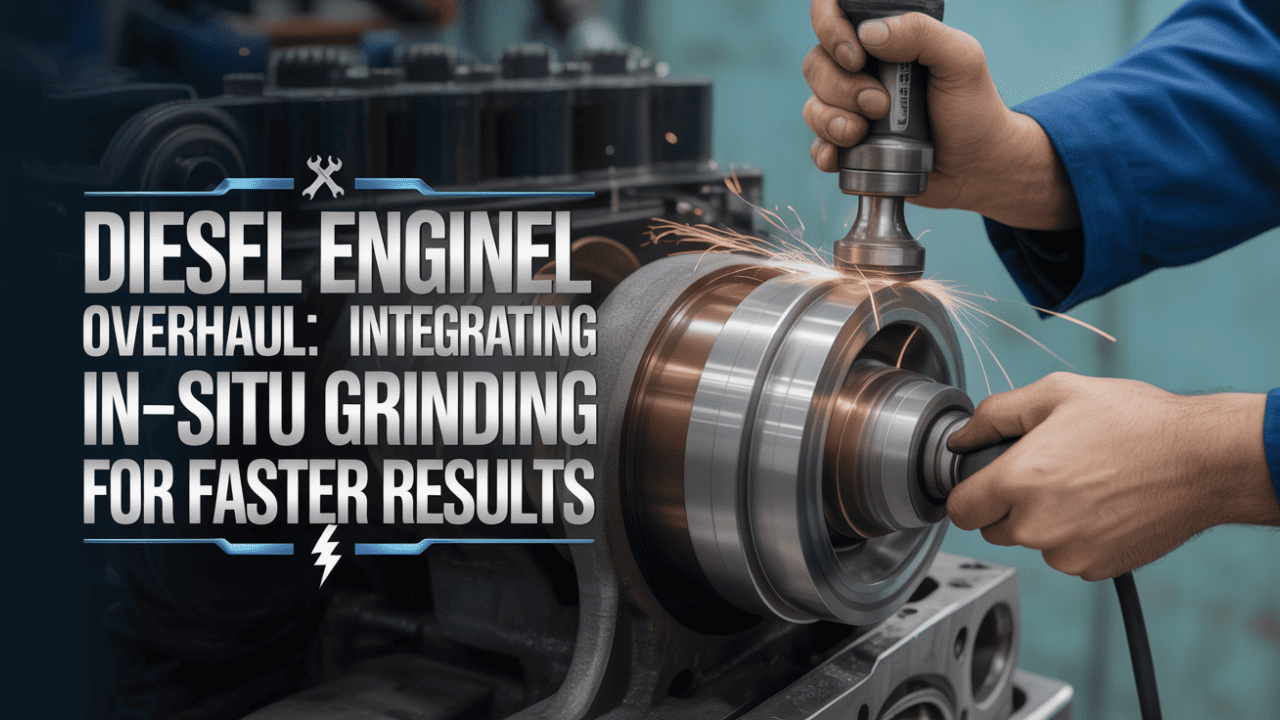Indeed, machinery employed in manufacturing processes must be both dependable and productive to sustain business, ensure quality, and make reasonable revenues. This article shows that proper rotor shaft maintenance is crucial for machinery performance. Rotor shafts are vital components for generating and rotating tools as well as equipment. But conventional grinding practices are employed for the maintenance and repair of these crucial parts. That leads to costly downtime, excessive downtimes, as well as equipment failure. Allow me to introduce in-situ rotor shaft grinding, which indeed is nothing other than a revolution in terms of benefits. In this article the author gives an overview of In-Situ Rotor Shaft Grinding and the advantages of it when it comes to industrial machines.
Understanding In-Situ Rotor Shaft Grinding
An innovative technology that is known as in-situ rotor shaft grinding restores worn and damaged rotary shafts at the equipment location. It reduces the frequency at which large shafts require changing, and transporting to a workshop for reconditioning is cost-effective. Appropriate in the portable grinding equipment, certain qualified personnel will be keen to repair the surface, alignment, and other wears. In-situ grinding and refinishing guarantee that the equipment can quickly return to its optimal performance and therefore can hardly have a lengthy downtime.
Automobile industries, windmills, electric fans, etc., all these use rotor shafts; similarly, manufacturing industries, marine services, as well as power generation industries are necessarily required to use rotor shafts. With mechanical systems, there has to be absolute reliability and consistent reliable performance to be able to be efficient. This performance in these shafts is being sustained through in-situ grinding. It minimizes cases of system failures and enhances operation efficiency as most issues are solved at the company’s workstation. In industries where machine breakdown brings a lot of disturbance in operation and equally big losses for the company, preventive maintenance is a must. Therefore, In-Situ Rotor Shaft Grinding is one of the most important maintenance achievements in industry that ensures the simplicity of high-quality and reliability in repair.
Key Benefits of In-Situ Rotor Shaft Grinding
Minimizing Downtime
It minimizes downtime, which is crucial to industrial operations. Rotor shaft maintenance involves equipment disassembly and hefty component shipment to off-site facilities to wait for repairs. This time-consuming method may lead to protracted inactivity, hurting bottom lines and productivity. For sectors that rely on continuous operation, these repairs may delay schedules, impair productivity, and increase costs.
In-situ rotor shaft grinding corrects these issues with no need to remove it from operation. This portable grinding gear allows technicians to perform the needed repairs rather than taking it apart, relocating it, and saving time. Also, these methods create less disruption in the operation and hasten the process of repairing the machinery. Companies can hold productivity to a more sustainable mark because of these on-site rotor shaft restorations.
In-situ grinding of rotor shafts is done to facilitate industries that require high production with minimum downtime. Equipment maintenance and avoidance of long shutdowns enable the business to manage resources and remain profitable.
Cost-Effectiveness
Cost-effectiveness is key in equipment maintenance. In addition to maintenance expenses, conventional grinding methods need staff, material transportation, and lost production time. These costs may add up quickly, making equipment maintenance expensive. The downtime required to disassemble, move, and reassemble enormous rotor shafts sometimes delays production and increases costs.
For its part, In-Situ Rotor Shaft Grinding is less expensive. By avoiding the logistical complications of removing and shipping heavy shafts, an organization can save money on shipping and maintenance charges. The on-site repair saves the business from being interrupted by very expensive downtime. This maintenance requires less time in personnel and equipment, which also reduces the cost of maintenance. In addition to saving money, this effectiveness enhances long-term finances.
Thus, in situ rotor shaft grinding is a cost-effective industrial equipment maintenance procedure. Optimizing the repair process and lowering costs boosts industrial equipment maintenance’s ROI. Companies may manage maintenance costs and maintain operational efficiency to boost financial success.
Enhanced Equipment Longevity
Longer equipment life means better operating efficiency and lower replacement costs. Rotor shaft wear and pressure can damage adjacent equipment due to component failure. Such breakdowns reduce operations and demand expensive repairs and replacements, hence the importance of rotor shaft integrity.
In-situ rotor shaft grinding corrects surface defects and reinstates shaft geometry, which is tied to equipment longevity. The method prevents wear and damage by fixing such issues on the spot. One of the advantages of in-situ grinding is its capability to prevent track corrosion that commonly arises and causes damage to shafts. Rotor shaft integrity maintained during compressor shaft grinding reduces catastrophic failures and costly replacements.
This technique brings out preventive maintenance. Preventative maintenance helps in keeping equipment in good working condition before massive problems occur. In-situ grinding increases the useful life of rotor shafts and equipment they support, hence promoting efficiency and long-term cost savings. For those companies that may want to help maximize such investments, in-situ rotor shaft grinding would keep equipment performance in place, thus preventing downtime and replacement costs.
Enhanced Precision and Quality
Precision is needed by industries that require specific parts to fit together with a certain level of accuracy and require high levels of quality control. Precision in these areas guarantees that this equipment runs as it is supposed to and to the optimum level of performance. In-situ rotor shaft grinding takes the tolerance to another level beyond repair and refurbishment by correctly positioning and refinishing some of the critical surfaces. This upgrade brings back the shaft to its standard measurements and often goes beyond and above what came out of the manufacturing line.
Specialists in in-situ grinding make use of the latest tools in measurements to ensure precision as well as workmanship. Precision is required in order to operate equipment and increase efficiency. Thus, in-situ grinding cements have excellent tolerance to achieve high energy efficiency and decrease operating costs. This process adds quality aspects directly to the life and performance of the equipment used in this process.
It is very clear that improving the dimensional accuracy consequently corresponds to the enhancement of the standard of the industry as well as the satisfaction of the consumers. Industry needs for equipment must be met, while the equipment should have high efficiency in order to produce high-quality products. Reducing quality cost increases the amount of time that a supplier and manufacturing firm takes to gain customer confidence and loyalty. Concentrated in-situ rotor shaft grinding raises the standards of apparatuses and boosts the efficiency of operations.
Applications in Industrial Equipment
In-situ grinding of rotor shafts has many applications in industries. These all-important components drive turbines, compressors, generators, and pumps in industries.
Power Generation Facilities: Rotor shaft wear is frequent in power plant turbines and generators. In-situ grinding restores shafts without taking them offline, ensuring power supply.
Manufacturing Plants: Manufacturing equipment such as lathes and milling machines may be susceptible to rotor shaft degradation. In situ allows manufacturers to keep their lines running.
Marine Equipment: A ship’s propulsion depends on its shaft. When transferring big components is difficult and time-consuming, in-situ grinding works.
MPA Power Project’s expertise in onsite rotor shaft grinding
As industrial requirements evolve, companies like MPA Power Project have pioneered in-situ rotor shaft grinding by providing specific solutions for different industries. MPA uses cutting-edge technology and skilled technicians in onsite Rotor Shaft Grinding to restore equipment to peak performance without losing quality or efficiency.
Its quality commitment, along with a strong industrial process expertise, turns them into a reliable and efficient partner for the firms.
Conclusion
In-situ rotor shaft grinding is revolutionizing industrial equipment maintenance by reducing downtime, improving precision, maximizing savings, and extending machinery component life. In competitive markets, industries must adopt new processes like in-situ grinding for future-proof operations.
Call to Action
Want more reliable and proficient industrial equipment? Come and experience the power of in situ rotor shaft grinding today! Enjoy time- and productivity-saving on-site maintenance with MPA Power Project’s professional solutions, tailored to your operational needs.











No Comments